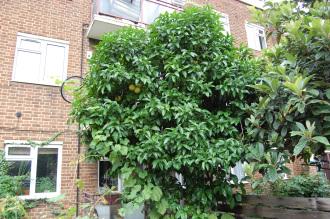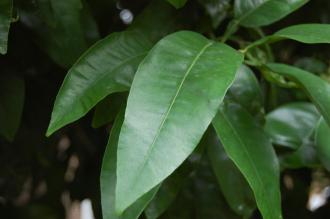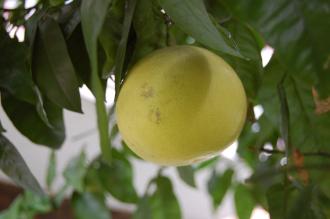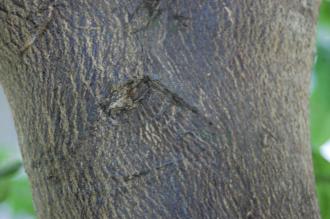
Citrus × paradisi (07/09/2014, Walworth, London)
Position: Full sun
Flowering period: Spring
Soil: Moist, well drained, acidic
Eventual Height: 6m
Eventual Spread: 5m
Hardiness: 9a, 9b, 10a, 10b, 11
Family: Rutaceae

Citrus × paradisi Leaf (07/09/2014, Walworth, London)
Citrus × paradisi is a small evergreen tree with a rounded habit. Its dark green shiny leaves are oblong to elliptic with serrulate margins, up to 15cm long and 5cm broad. Its leaves emerge purple/ green. Its branches have occasional sharp spines. Its fragrant white flowers are waxy with a purple base and up to 5cm across. Its yellow fruit are spherical and up to 15cm across.
Citrus × paradisi, commonly known as the Grapefruit, was first bred in Barbados in the eighteenth century.

Citrus × paradisi Fruit (07/09/2014, Walworth, London)
The etymological root of the binomial name Citrus is is from the ancient Latin name for this tree. Paradisi is named after Count Giovanni Paradisi of Modena (1760-1826).
The landscape architect may find Citrus × paradisi useful as a fragrant small evergreen tree that produces edible fruit. It can only be grown in the warmest parts of the UK.
Ecologically, Citrus × paradisi flowers are attractive to pollinating insects.

Citrus × paradisi Bark (07/09/2014, Walworth, London)
Citrus × paradisi prefers moist, sandy loam soils. It prefers an acidic pH of soil.
Citrus × paradisi requires little maintenance. This tree may be cut back severely without harming it.

